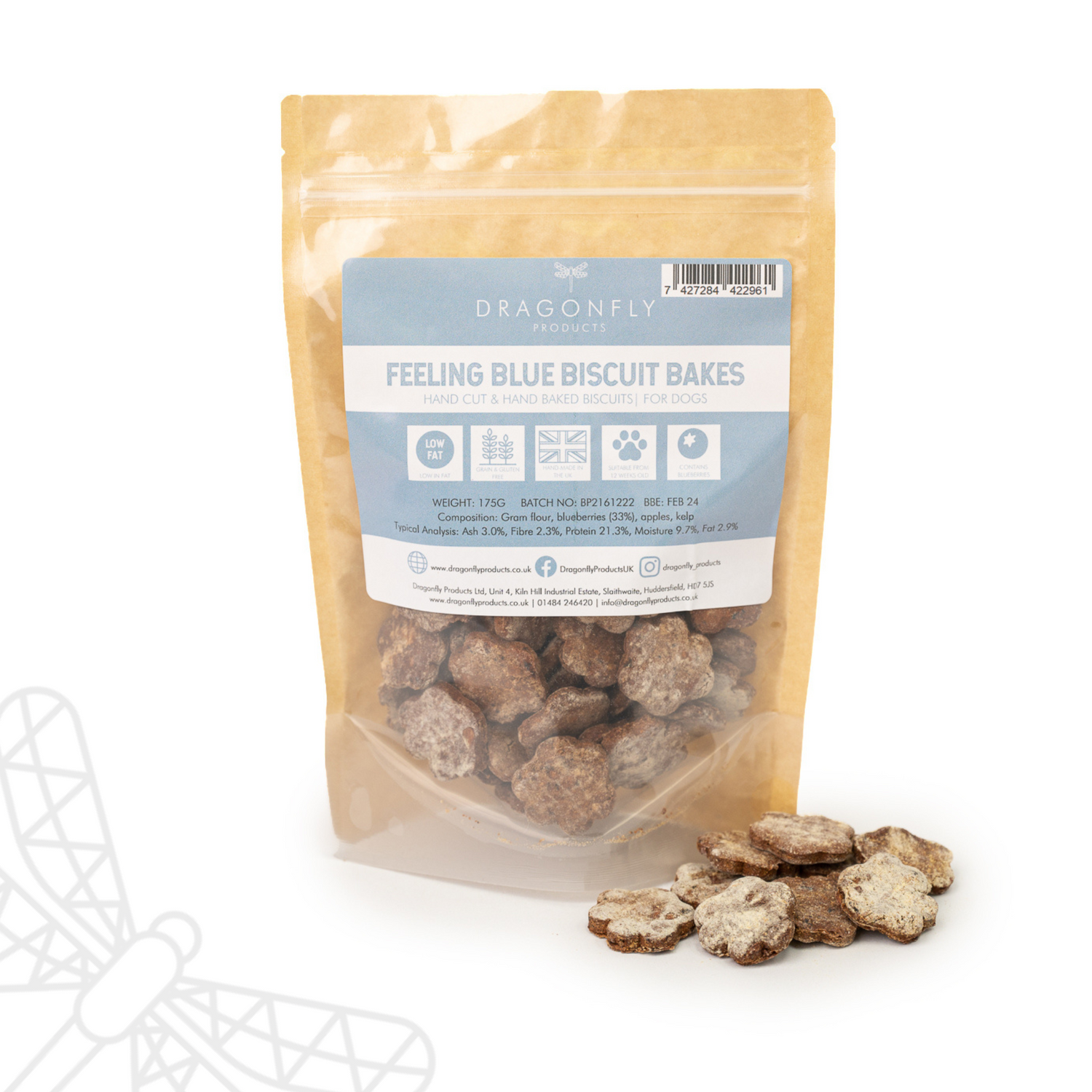
What causes tear stains in dogs?
Tear stains are typically caused by an excessive production of tears, known as epiphora. These tears contain a pigment called porphyrin, which is an iron-based molecule that results from the breakdown of red blood cells. When exposed to air, porphyrins oxidize, turning the tears a reddish-brown colour that becomes noticeable on the fur, especially in light-coloured dogs.
There are several factors that can lead to tear staining, including:
- Blocked tear ducts: If tears cannot drain properly through the nose, they spill onto the fur.
- Eye infections: These can increase tear production and discoloration.
- Allergies: Environmental or food allergies can cause excessive tearing.
- Genetic predisposition: Some breeds, especially those with flat faces, are prone to tear stains.
- Dietary issues: Certain ingredients in food, such as artificial preservatives, can exacerbate tearing
Table of Contents
- How Do I Prevent Tear Stains in Dogs?
- Are Tear Stains Harmful to My Dog?
- Which Dog Breeds Are Most Prone to Tear Staining?
- How Can I Safely Remove Tear Stains at Home?
- Natural Remedies for Tear Stains in Dogs
- Can a Dog’s Diet Affect Tear Staining?
- Why Are My Dog’s Tear Stains Reddish-Brown?
- Do Tear Stains Indicate an Underlying Health Problem?
- Can Tear Stains Be Permanent?
- Is There a Medical Treatment for Tear Stains in Dogs?
- How Often Should I Clean My Dog’s Tear Stains?
- Can Switching to Bottled or Distilled Water Reduce Tear Staining?
- Are Tear Stains More Common in Certain Weather Conditions or Environments?
- What Is the Difference Between Tear Stains Caused by Porphyrins and Those Caused by Yeast Infections?
How Do I Prevent Tear Stains in Dogs?
Prevention of tear stains requires a combination of grooming, environmental management, and diet. Here are several methods to prevent tear stains:
- Regular eye cleaning: Clean the area around your dog’s eyes daily with a damp cloth or special eye wipes to remove tears and prevent staining
- Use filtered water: Some dogs are sensitive to minerals in tap water. Switching to bottled or filtered water may help reduce tear staining
- Choose stainless steel bowls: Avoid using plastic bowls, which can harbour bacteria and contribute to skin irritation around the eyes
- Dietary improvements: Feed your dog high-quality food without artificial additives, which can cause allergic reactions or excessive tearing
Are Tear Stains Harmful to My Dog?
Tear stains themselves are not harmful, but they can signal underlying health issues. In most cases, tear staining is a cosmetic concern. However, if left untreated, the dampness caused by excessive tearing can lead to bacterial or yeast infections, which can cause discomfort and further health complications.
If tear staining is accompanied by symptoms like eye redness, swelling, or discomfort, it's essential to consult a veterinarian to rule out infections or more serious eye conditions like glaucoma or entropion (inward-rolling eyelids).
Which Dog Breeds Are Most Prone to Tear Staining?
While tear staining can affect any breed, certain dogs are more prone due to their anatomical features or genetics. Breeds with flat faces (brachycephalic breeds), large eyes, or excess facial skin are more likely to experience tear staining. These breeds include:
- Bulldogs
- Boxers
- Pekingese
- Pugs
- Maltese
- Shih Tzus
- Bichon Frises
- Poodles
- Cocker Spaniels
These breeds may require more frequent grooming and attention to prevent tear staining from becoming severe.
How Can I Safely Remove Tear Stains at Home?
Removing tear stains involves consistent cleaning and grooming. Here are several safe methods to try at home:
- Eye wipes: Use vet-recommended tear stain wipes designed specifically for dogs to clean the fur around the eyes.
- Boric acid solution: A mild solution of boric acid (found in contact lens cleaners) can help lighten existing stains by oxidizing the iron in porphyrins
- Warm water and cloth: Gently wiping your dog’s face with a damp cloth twice daily can help prevent buildup
-
Trimming the fur: Keeping the fur around the eyes short will prevent it from soaking up excessive tears
Avoid using harsh chemicals or products not intended for dogs, as these can irritate their skin and eyes.
Natural Remedies for Tear Stains in Dogs
Herbal Remedies
Herbs such as parsley, dandelion, and eyebright are known for their natural anti-inflammatory and antioxidant properties. Incorporating these herbs into your dog’s diet may help reduce tear staining by addressing underlying inflammation. Parsley acts as a diuretic, helping to flush toxins from the body, while eyebright is traditionally used to support eye health.
Apple Cider Vinegar
Apple cider vinegar has potent antibacterial and antifungal qualities that can help manage tear stains. To use it, mix equal parts apple cider vinegar and water, then gently clean the area around your dog’s eyes with a cloth. Be careful to avoid contact with the eyes themselves, as the acidity can cause irritation.
Chamomile Tea
Chamomile tea offers calming and anti-inflammatory benefits, making it a useful remedy for irritated skin caused by tear stains. Brew a mild chamomile tea, let it cool, and apply it with a cotton ball to the affected areas. Chamomile helps reduce inflammation and soothe the skin around the eyes.
Coconut Oil
Coconut oil, known for its moisturising and antimicrobial properties, can help soften and lighten tear stains. By gently massaging a small amount of coconut oil into the stained fur daily, you can help fade the discoloration while keeping the skin hydrated and healthy.
Turmeric
Turmeric contains curcumin, a compound praised for its anti-inflammatory and antioxidant effects. Adding a small amount of turmeric to your dog’s food each day may help address tear stains from within by reducing overall inflammation.
Can a Dog’s Diet Affect Tear Staining?
Yes, diet can play a significant role in tear staining. Poor-quality dog food containing artificial colors, preservatives, or allergens can lead to excessive tearing and staining. In some cases, a food allergy to ingredients like chicken, beef, or wheat may contribute to the problem.
Switching to a high-quality, grain-free, or limited-ingredient diet may help reduce tear production. Additionally, adding probiotics (such as kefir water) or apple cider vinegar to your dog’s food may help reduce staining by balancing gut health.
Why Are My Dog’s Tear Stains Reddish-Brown?
The reddish-brown color of tear stains comes from porphyrins, which are excreted through tears and saliva. When these iron-containing molecules are exposed to air, they oxidize, turning the fur brown or red. This process is more noticeable in light-coloured dogs but can occur in any breed.
If the stains are more brown than red, it could be a sign of a yeast infection due to constantly moist skin, which requires a different type of treatment.
Do Tear Stains Indicate an Underlying Health Problem?
While tear stains are often cosmetic, they can sometimes signal underlying health problems. Conditions such as eye infections, glaucoma, entropion, or blocked tear ducts can all contribute to excessive tearing. Allergies (both food and environmental) are also a common culprit.
If your dog suddenly develops tear stains or shows signs of discomfort, such as pawing at their eyes or redness around the eye area, consult a veterinarian for a thorough evaluation.
Can Tear Stains Be Permanent?
Tear stains themselves are not permanent, but they can be challenging to eliminate if not addressed early. Regular grooming, cleaning, and addressing underlying health issues will reduce or eliminate tear stains over time. In some cases, residual staining may persist if the staining has been left untreated for long periods.
Is There a Medical Treatment for Tear Stains in Dogs?
Yes, there are medical treatments for tear stains, especially when they are caused by underlying health conditions like blocked tear ducts, infections, or eye abnormalities. Vets may prescribe:
- Antibiotics: If the staining is caused by bacterial infections
- Surgery: In cases of severe entropion or blocked tear ducts, surgery may be necessary to correct the issue
- Eye drops: These may help reduce irritation and excessive tearing
How Often Should I Clean My Dog’s Tear Stains?
For dogs prone to tear staining, it’s important to clean the area around the eyes daily. This prevents tears from accumulating and drying on the fur, which leads to staining. You can use a damp cloth, special tear stain wipes, or a saline solution to wipe under the eyes.
Can Switching to Bottled or Distilled Water Reduce Tear Staining?
Yes, switching to bottled or distilled water may help reduce tear staining in some dogs. Tap water can contain minerals and impurities that may contribute to excessive tearing and staining. Using distilled water, which is free from these additives, has been anecdotally reported to improve tear staining in sensitive dogs.
Are Tear Stains More Common in Certain Weather Conditions or Environments?
Tear stains can worsen in environments with high levels of allergens, such as pollen, dust, or pollution. Dogs with allergies may experience increased tear production, leading to more staining. Additionally, humid conditions can exacerbate the problem by keeping the fur moist, which encourages bacterial growth and staining.
What Is the Difference Between Tear Stains Caused by Porphyrins and Those Caused by Yeast Infections?
Tear stains caused by porphyrins are typically red or brown due to the oxidation of iron-containing molecules in the tears. In contrast, yeast infections can cause brown or darker stains, particularly when the fur around the eyes remains damp for extended periods. Yeast thrives in moist environments and can lead to additional skin irritation and a musty odour.
It’s important to identify whether the staining is caused by porphyrins or yeast, as treatment may differ. For yeast infections, antifungal treatments and keeping the fur dry are key to preventing further staining.
Tear staining in dogs can be managed and even prevented with proper care, regular cleaning, and attention to underlying health issues. If you're concerned about your dog’s tear stains, it’s always a good idea to consult your veterinarian to rule out serious conditions and find the best course of treatment. Regular grooming and attention to diet and water quality can significantly improve your dog’s appearance and comfort.
For any further help and advice please contact us on 01484 246420 and why not join our social media channels and online community on Instagram, Facebook or YouTube.
With Wags and Woofs,
Laura, Dolly & Reggie







